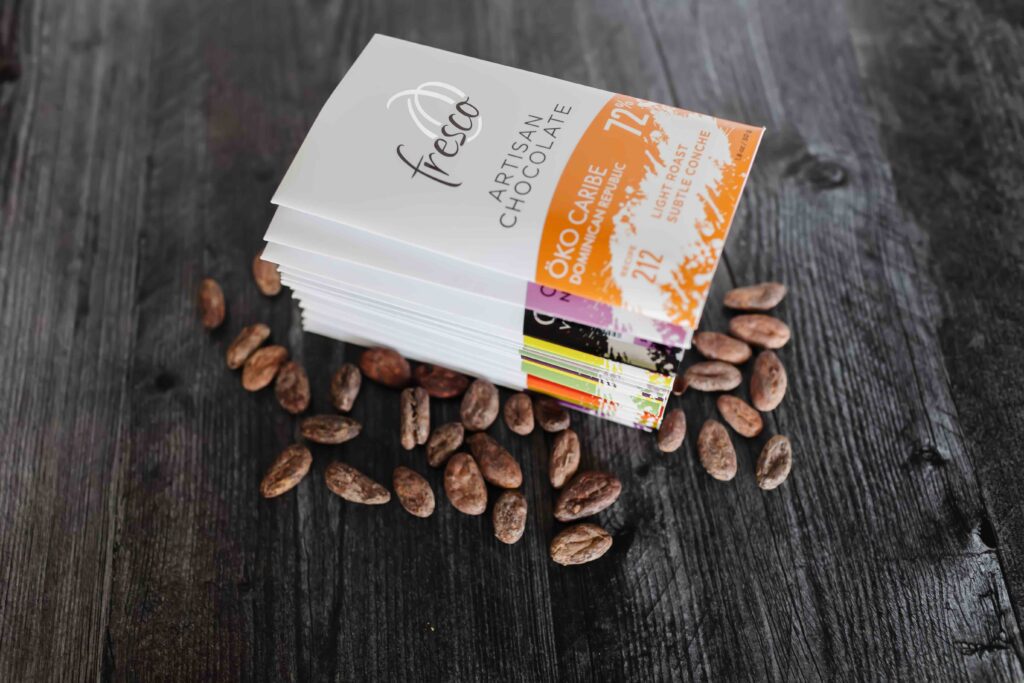The final flavor development step in the chocolate-making process. Heat, motion (shear), aeration, and time are combined during conching to produce the finished flavor and texture of both dark and milk chocolate.
Conching is in fact two distinct processes that take place within the same machine.
The first process is flavor development. Fermentation and roasting produce the flavor components required to give chocolate its pleasant taste, but they also result in some undesirable astringent/acidic ones that are necessary to remove.
In addition, some chocolates need further flavor development. For example, for some purposes, an enhanced cooked flavor (caramelization) is desirable.
The second process is to change the chocolate from a powder, flake, or thick dry paste into a free flowing liquid (Beckett, Science).
Flavor Development
During conching, flavor from the cocoa migrates to the surface of sugar particles. This develops the homogenous taste of chocolate and reduces the sweetness of the sugar (Ziegleder).
Conched chocolate is described as having a smooth, mellow flavor compared to an unconched one. The bitterness is reduced, perhaps allowing other flavor notes to be more pronounced (Beckett, Industrial Chocolate). The aroma of chocolate during conching is of acetic acid, the acid that gives vinegar its characteristic taste and which developed during fermentation.
Chocolate can be conched to different levels. A lightly conched chocolate may retain more of the acids created during cocoa bean fermentation. This may result in chocolate with sharper or more acidic flavor notes. Chocolate that is conched to a higher degree may have mellower or more harmonious flavor notes.
Texture and Viscosity Development
Some chocolate manufacturing methods, such as the use of roller mills, produce chocolate flake or powder which requires further processing. Conching converts chocolate flake or powder into a paste, while removing moisture and acids by applying mechanical sheer and heat. Cocoa butter is added to the paste, which is then converted to liquid chocolate.
Conching Liquid Chocolate
Some chocolate manufacturing methods, such as the use of a ball mill or a mélanger, produce liquid chocolate of the desired final texture and viscosity. Under these conditions, a final conching step may be desired for flavor development.
Próximamente versión en español

Entry added: November 28, 2022
Verified on: September 14, 2023
Authored by
Rob Anderson, Founder, Fresco Chocolate
Chocolate Maker
Ed Seguine, President, Seguine Cacao Cocoa & Chocolate Advisors
Researcher & Consultant
Clark Guittard, Director of International Sales, Guittard Chocolate
Marketer / Sales Professional
References
The Science of Chocolate, Stephen T. Beckett (Royal Society of Chemistry, 2008), 57
Conching, Gottfried Ziegleder, Fraunhofer Institut für Verfahrenstechnik und Verpackung, IVV, Giggenhauser Strasse 35, 85354 Freising, Germany
Industrial Chocolate Manufacturing and Use, Fourth Edition, Stephen T. Beckett (Wiley-Blackwell, 2008), 184-185
Have a comment on this definition?
